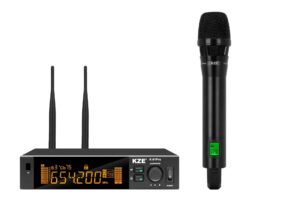Tin tức
LITTLE TIPS ON SOUND IN GENERAL
LITTLE TIPS ON SOUND IN GENERAL
SOUND ![]()
![]()
Sound is what we experience when the ear reacts to a certain range of vibrations. These vibrations themselves can also be called sound. Acoustic instruments generally produce sound when some part of the instrument is either struck, plucked, bowed or blown into. Electronic instruments produce sound indirectly they produce variations in electrical current which are amplified and sent through a speaker.
The three qualities of sound are: pitch, timbre (tone color) and loudness.
PITCH ![]()
![]()
Pitch is the quality of sound which makes some sounds seem “higher” or “lower” than others. Pitch is determined by the number of vibrations produced during a given time period. The vibration rate of a sound is called its frequency the higher the frequency the higher the pitch. Frequency is often measured in units called Hertz (Hz). If a sound source vibrates at 100 vibrations per second, it has a frequency of 100 Hertz (100 Hz). Mels scale would be found here. The average person can hear sound from about 20 Hz to about 20,000 Hz. The upper frequency limit will drop with age.
The human ear is very adept at filling gaps. There is a body of evidence to show that if the lowest frequency partial is missing from a complex tone, the ear will attempt to fill it in. This effect is used, for instance, by church organists who simulate the effect of say a low ‘C’ for which they do not have a pipe of sufficient size by playing the ‘C’ and ‘G’ an octave above. These two pipes provide all the partials for the lower ‘C’ note except for the lowest frequency, which the ear obligingly provides. Listening to speech or music on a poor quality transistor radio that cannot reproduce low frequencies provides another example. The programme is rendered intelligible by the ear filling in the lowest partial tones. That rapid speech is intelligible suggests that the synthesis in the ear is practically instantaneous.
Timbre
Timbre is a French word that means “tone color”. It is pronounced: tam’ ber. Timbre is the quality of sound which allows us to distinguish between different sound sources producing sound at the same pitch and loudness. The vibration of sound waves is quite complex; most sounds vibrate at several frequencies simultaneously. The additional frequencies are called overtones or harmonics. The relative strength of these overtones helps determine a sound’s timbre.
LOUDNESS ![]()
![]()
Loudness is the amount or level of sound (the amplitude of the sound wave) that we hear. Changes in loudness in music are called dynamics. Sound level is often measured in decibels (dB). Sound pressure level (SPL) is a decibel scale which uses the threshold of hearing as a zero reference point. Sones scale would be found here.
DYNAMIC RANGE ![]()
![]()
The dynamic range of an orchestra can exceed 100dB. If the softest passage is 0db, the loudest passages can exceed 100dB. In electronic equipment the lower limit is the noise level (hissing sound) and the upper limit is reached when distortion occurs. The dynamic range of electronic equipment is also called signal-to-noise ratio.
Thanks for reading ![]()
OgagaRume MusicChoral MusicEagle MusicSweetnotes Music#viralpage#highlights



Tất cả cảm xúc:

 Box Livestream Stereo NMC AUDIO SC378, Có hỗ trợ PK 2 chiều, Vừa sạc vừa live
Box Livestream Stereo NMC AUDIO SC378, Có hỗ trợ PK 2 chiều, Vừa sạc vừa live 